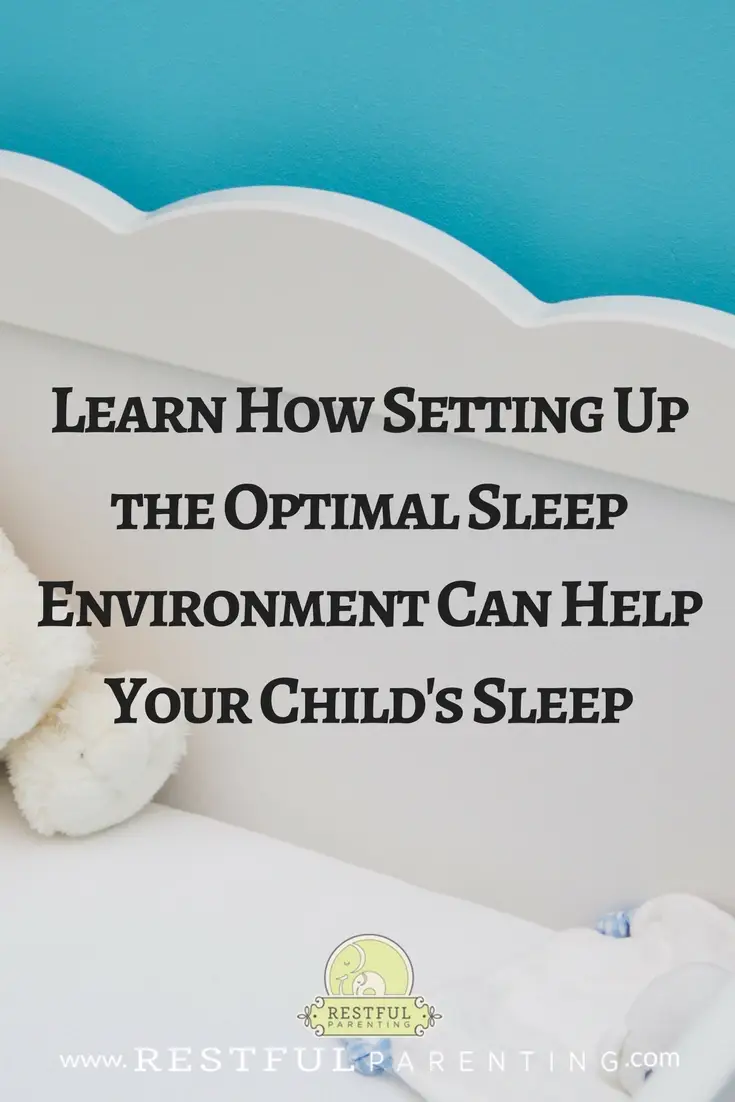How Setting up the Optimal Environment Can Help Your Child’s Sleep
Share this:

Some people do not realize how important the environment is for healthy sleep but making some small changes to your child’s sleep space really can make a difference in their overall sleep. Set yourself up for success and promote healthy sleep with a bedroom that invites relaxation and calm. Wherever your child sleeps, the goal is to create an environment that is conducive for sleep. Set up your child’s bedroom to optimize sleep with our tips below
Make it dark
Having a dark space will help promote sleep for both adults and children. Our bodies read dark as asleep and light as awake. Whether your eyes are opened or closed, the body reads light and if there is too much while you are preparing for sleep it can interfere with the production of melatonin, which is our body’s natural sleep aid.
How dark should your environment be?
On a scale of 1–10 (10 being pitch black) you will want to aim for a 7–8 for nap times during the day and 9 for bedtime and throughout the night.
How can you make the room darker?
Blackout blinds and curtains are great for darkening the room. However, often times light will shine through the sides of the blinds. Try taping black Bristol board to the windows, throwing blankets over the curtains or taping the curtains to the wall to eliminate that slit of light.
Is a night-light recommended?
Although most infants/babies will do well without a night light in their room at night, it may be beneficial for you to have one so that you can see where you are going. After having put so much effort into getting your child down to sleep, the last thing you want is to awaken them by stepping on one of their toys when you are checking on them.
Tip: If you decide to use a night-light, choose one with a soft glow as opposed to something very bright. Ideally, pick one with a red or pink light vs. one with a blue or bright white light.
Use a sound machine
Using a sound machine is recommended for a few reasons. To start, they cancel out exterior noises either from outside the house or within the home. It helps cue your little one that it is time for sleep as it becomes part of their routine and it can help parents feel less anxious about waking their sleeping child when there is commotion in the home such as having friends or family over, someone coming to the door, the dog barking, a toddler running around etc.. Another advantage to using the sound machine is when your child is away from their sleep space. When traveling or visiting friends or family, using the same sound that is used at home can be comforting to your child.
When using a sound machine, we recommend placing it six feet away from the crib at a low-to-medium setting. If you have two children in separate rooms, or if you would prefer the sound machine outside of the room, placing it in the hallway is another option.
What about the timer function?
When purchasing a sound machine, we recommend choosing one without a timer or with the option to turn the timer off. Many sound machines are equipped with a timer that automatically shuts off after 45 minutes which is the duration of a child’s sleep cycle. When they are transitioning from one sleep cycle to the next, they wake up and check their surroundings to make sure that everything is the same as it was when they fell asleep. If their environment has changed (such as the sound machine being off), they will fully wake up, making the transition through sleep cycles much more difficult for them.
![]() Tip: Our preferred settings are running water or white noise which is a consistent/steady sound as opposed to the settings with different pitches and volumes such as chirping birds and ocean waves.
Tip: Our preferred settings are running water or white noise which is a consistent/steady sound as opposed to the settings with different pitches and volumes such as chirping birds and ocean waves.
Eliminate exposure to blue light: turn off the TV
Unfortunately there are a lot of children’s sleep products that are blue-light based, which is the worst light for sleep. When your child is exposed to blue light from TV, computer, night lights, clocks etc., the body stops producing melatonin. It is advised to eliminate all exposure to blue light 1–2 hours before bedtime for children and adults alike.
![]() Tip: If TV is part of your child’s bedtime routine, try moving it earlier into the routine so that the hour leading up to bedtime is TV free.
Tip: If TV is part of your child’s bedtime routine, try moving it earlier into the routine so that the hour leading up to bedtime is TV free.
Find the optimal temperature
We all know how great it is to snuggle into our blankets in a cooler room and how difficult it can be to fall asleep in the heat. Having your child’s bedroom temperature set between 65–70˚F and 18–21˚C will ensure that they are not overheating or too cold.
![]() Tip: Although blankets are not recommended for little ones, using a sleep sack can help them stay cozy and comfortable through the night.
Tip: Although blankets are not recommended for little ones, using a sleep sack can help them stay cozy and comfortable through the night.
Reduce stimulation
We understand how much work has gone into creating the perfect nursery for your new baby and that removing products with lights and sounds from in or around the bed can seem boring, but they can rob your child of sleep during sleep hours. This includes removing the mobile from above baby’s bed.
Some children will be more sensitive to stimulation while others may not seem as bothered by it at all. Minimizing the amount of decor in or around your child’s bed including stickers/decals, busy sheets, toys in bed can go along way in teaching your little one that when it is time for sleep, a calm space is essential.
![]() Tip: Save the mobile to use to entertain baby during non-sleep time while putting laundry away or playing in their room.
Tip: Save the mobile to use to entertain baby during non-sleep time while putting laundry away or playing in their room.
Use a consistent sleep area
Now that you have put so much work into setting up your child’s sleep environment, you want to make sure that you are working towards having your child sleep there 90% of the time. Inconsistent sleep environments can be confusing to your child, while a consistent sleep space will help cue your child that it is time for sleep as well as allowing them to learn how to settle faster.
Checklist: Do you have what you need to set up your little one’s environment?
- Blackout curtains
- Sound machine – without a timer, and with a consistent sound
- No blue light (including night lights, electronics)
- Recommended temperature
- Minimal stimulation
If you need more help getting your child’s sleep on track, check out our sleep services or contact us for a free consultation.


